Montana, known as the Treasure State, is a rockhounder’s paradise.
With its vast open lands and rich geological history, you’re in for a real treat. Whether you’re a seasoned collector or just starting out, you’ll find a wealth of minerals, gems, and fossils.
From the sapphire-rich gravels of the Missouri River to the famed agate beds along the Yellowstone, Montana’s diverse terrain offers an exciting array of rockhounding spots.
You’ll uncover everything from dazzling quartz crystals to ancient petrified wood.
Montana’s a gem hunter’s dream! Sapphire Mountains, Yellowstone River agates, Crystal Park quartz crystals – each region boasts unique treasures. Respect the land, follow the rules, and your adventure will be a rockin’ success!
Get our FREE United States Rockhounding Map HERE
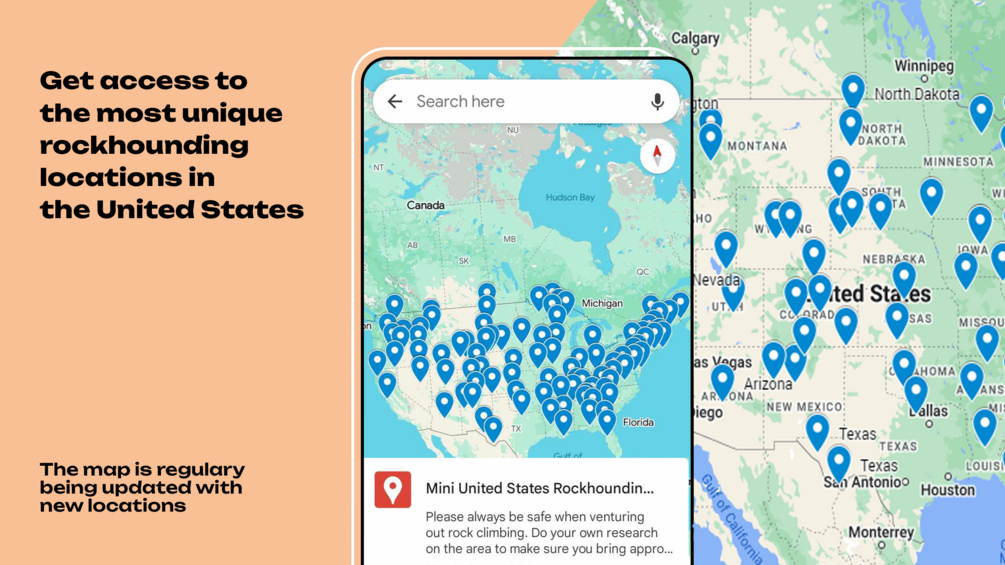
Montana Rockhounding Locations
When you’re ready to start your rockhounding adventure in Montana, knowing the right locations is key. Montana, nicknamed “The Treasure State,” lives up to its name with a range of sites brimming with geological wonders.
Crystal Park
Situated in the Pioneer Mountains in southwest Montana, Crystal Park is a public dig site well-known for its abundance of quartz crystals. With a small fee for entry, you’re allowed to dig for these pristine specimens using hand tools, making it an ideal spot for family outings.
- Open seasonally from May to September
- Bring your own tools (no power tools allowed)
- Amenities include picnic areas and restrooms
Gem Mountain Sapphire Mine
If sapphires are what you seek, then heading to Gem Mountain near Philipsburg will reward you with a fruitful search. Here you can sieve through gravel to uncover your own sparkling sapphires.
- Gravels are pre-washed
- Staff on hand to help identify finds
- Options for heat treating and faceting stones
Yellowstone River
For a more laid-back experience, the Yellowstone River has several access points where rockhounds can scour the shoreline for agates. The best time to look is after a high-water event, which can unearth new layers of rock.
- Seek permission if venturing onto private land
- Ideal after spring runoff
Besides these, other notable spots include the Missouri River near Helena for its sapphire deposits and the variety of minerals at the Lincoln Road RV Park. Each location offers a unique set of treasures to discover. Be mindful of local regulations and practice ‘leave no trace’ principles to help preserve these natural areas for future generations.
Whether you’re sifting through gravels for sapphires or digging for quartz, the adventure lies not just in the find, but also in the experience of exploring Montana’s rugged terrains. Remember, preparation is key – pack the right tools, wear appropriate clothing, and always have a plan for your day.
What Gemstones are Found in Montana?
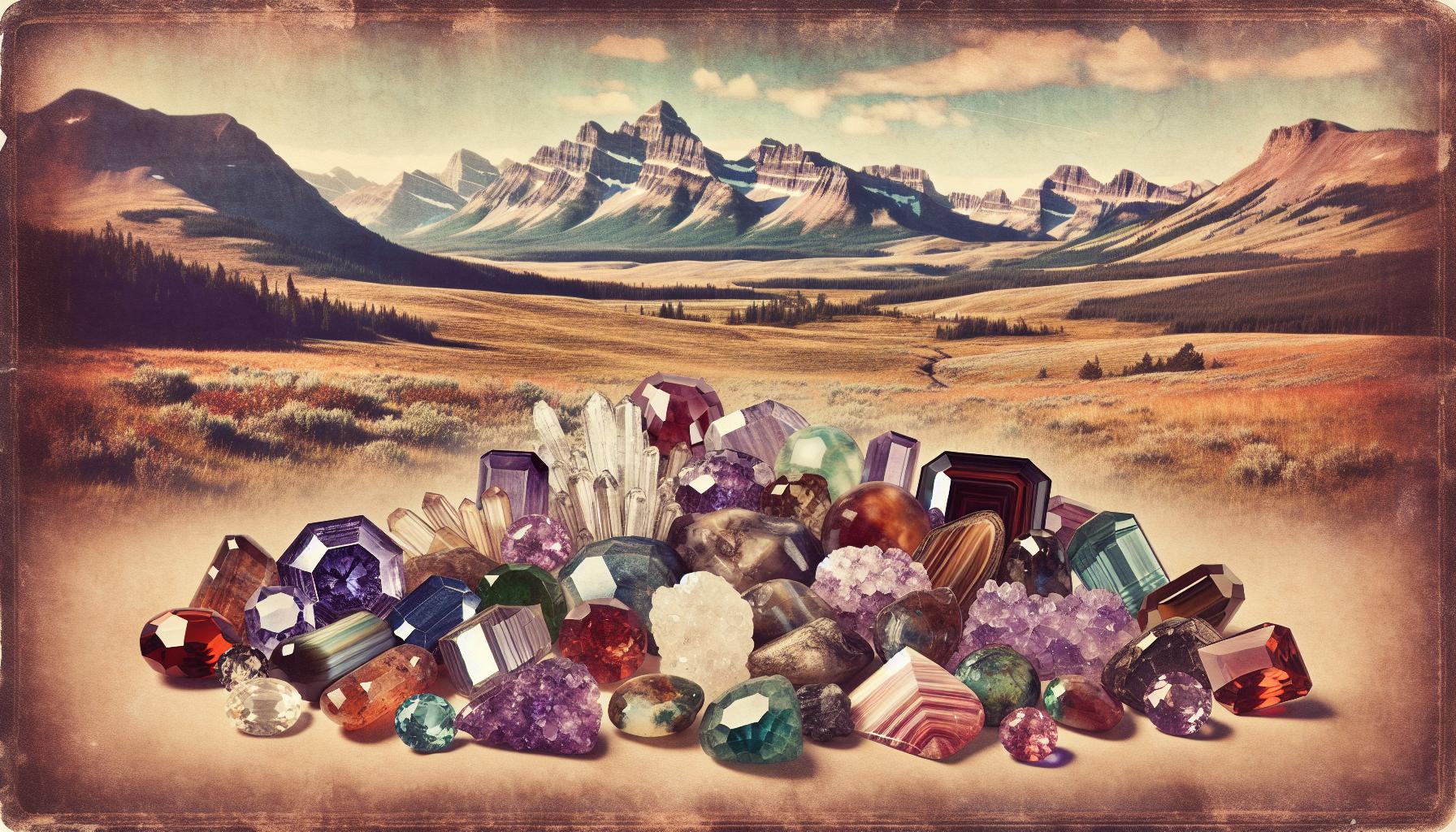
Venturing into Montana’s diverse geology, you’ll discover that it’s a treasure trove for gemstone enthusiasts. Montana is affectionately known by gem lovers as “The Treasure State” not just for its picturesque landscapes but for the riches beneath its soil. As you navigate through the state’s rugged terrain, you could unearth a variety of gemstones that have captivated collectors and jewelers worldwide.
One of the most sought-after gems in Montana is the Montana Sapphire. Originating mainly from the western half of the state, these sapphires are renowned for their stunning hues, ranging from pale blues to greens and deep violets. Locales like the Gem Mountain Sapphire Mine offer you the chance to sift through gravel and possibly find your own shimmering piece of Montana.
Next on the list is Montana Agate, a type of chalcedony, which exhibits fascinating patterns and colors. The Yellowstone River and its tributaries are best spots for rockhounds seeking to add these captivating stones to their collections. Each Montana Agate is unique, displaying bands of red, orange, and black caused by iron oxide impurities.
- Notable Gemstones in Montana:
- Montana Sapphire
- Montana Agate
- Garnet
- Jade
- Amethyst
When searching for garnets, keep an eye out for the ruby-red stones that could be strewn in the gravels of streams. Although garnets are widespread, finding gem-quality stones is a scrupulous adventure. For those looking for a greener variety, Montana’s jade reserves are a noteworthy stop on your journey. The Necklace Valley is a particular jade haven for those with a keen eye.
Beyond the more common stones, the state is also a patchwork of amethysts, another gem-worthy of your attention. Veins of purple quartz can be found in various locations, each amethyst deposit more enchanting than the last, making for an exquisite addition to any rock collection.
As you scour Montana’s majestic landscapes for these natural wonders, remember that each region has its own ecosystem and regulations. Always ensure you’re respecting the environment and adhering to local rockhounding laws during your explorations.
What Sedimentary Rocks You Can Find in Montana?
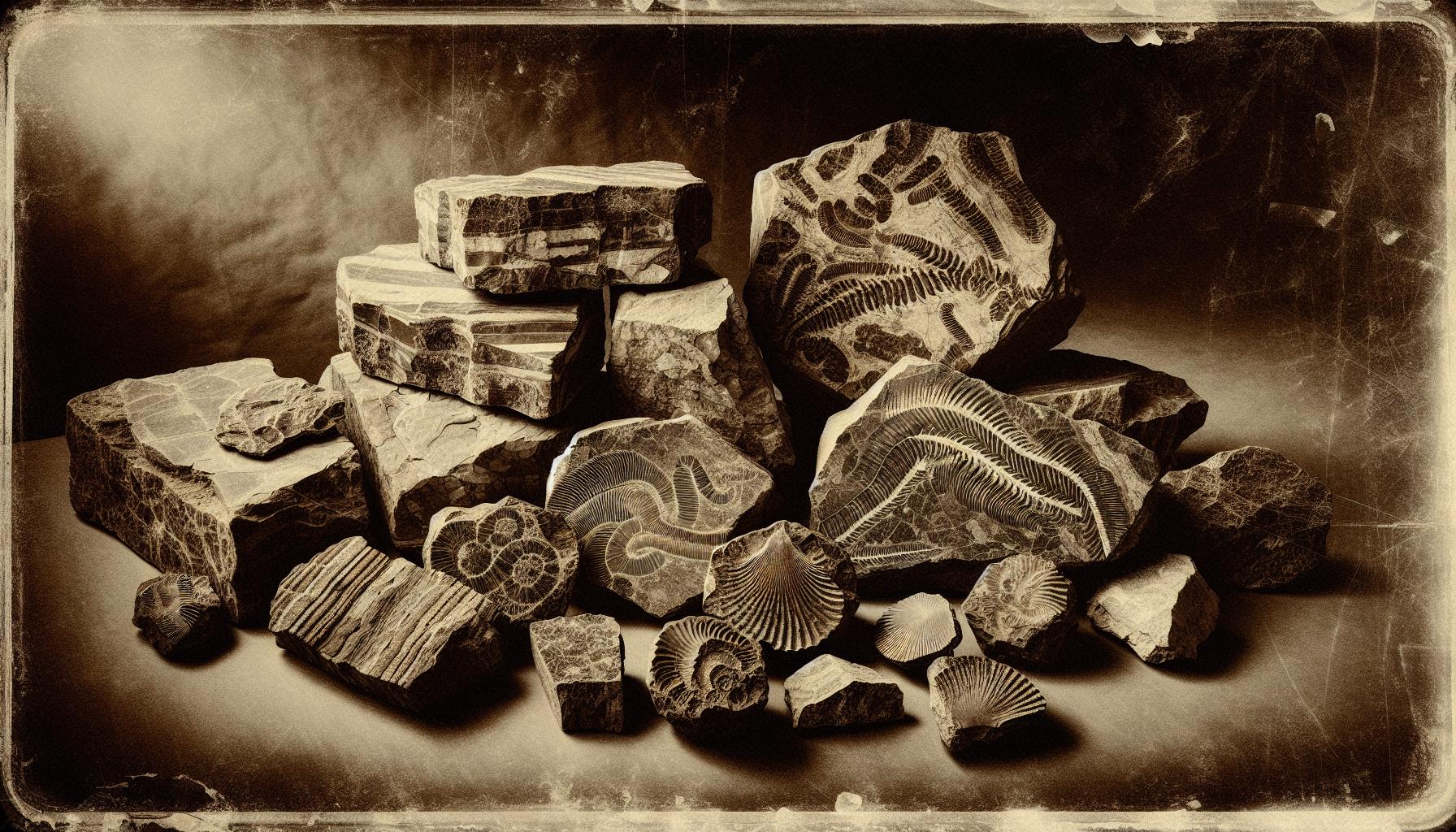
Discovering the treasures of Montana’s geological past requires knowledge of the sedimentary rocks you’re likely to encounter. As you explore the vast, open lands, you’ll find that Montana is home to a diverse array of sedimentary rocks, many of which bear evidence of the state’s ancient marine environments.
Among the sedimentary finds, Shale is quite common, often revealing itself in layers upon the earth. This rock can contain fossils of ancient sea creatures, giving you a glimpse into prehistoric life. Limestone, another prevalent sedimentary rock in Montana, can contain beautiful fossilized remains as well. In some areas, limestone is present with unique features like stromatolites, which are layered structures formed by the trapping of sedimentary grains by microorganisms.
Another notable sedimentary rock found in Montana is sandstone. Known for its array of colors and the capacity to reveal the Earth’s history through its layered bands, sandstone formations are a rockhound’s delight. They often harbor traces of past river systems or even signs of ancient deserts.
Don’t overlook the extraordinary Siltstone, which is finer than sandstone and reveals delicate details of past environments. With its fine grain, siltstone often preserves the subtlest features from past landscapes, including footprints or ripple marks.
While exploring for these rocks, be sure to visit areas like the Hell Creek Formation, which is renowned for its impressive record of the Cretaceous Period, or the Bearpaw Shale, where marine fossils abound.
What Metamorphic Rocks are found in Montana?
When you’re rockhounding in Montana, you’ll find an array of metamorphic rocks, each with its own charm and history. These rocks have undergone profound changes due to immense heat and pressure deep within the Earth’s crust, crafting unique textures and patterns that capture the essence of geological transformation.
In the treasure state, garnet, the state gemstone, is a common find, particularly the variety known as almandine. This deep red gemstone is not only aesthetically pleasing but also holds historical significance in Montana’s mining past. Sapphire, another gem-quality stone, undergoes metamorphic processes as well, resulting in Montana’s renowned blue beauties that are sought after by collectors and jewelry enthusiasts worldwide.
Quartzite, a hard metamorphic rock originating from quartz sandstone, is prevalent in the area and is typically associated with high-grade metamorphic environments. Here’s a quick list of where to find these transformational wonders:
- Crystal Park
- Ruby Reservoir
- Sapphire Mountains
Additionally, Montana boasts deposits of serpentine, a group of minerals that form an assemblage, giving way to a characteristic green coloration that’s hard to miss. Often associated with the state’s former asbestos mines, this mineral requires careful handling due to its fibrous nature.
Furthermore, the presence of schist, with its distinctive layers and foliation, tells a tale of dynamic geological processes. This rock can contain valuable minerals like gold, which has propelled prospecting activities in the state. Keep your eyes peeled while exploring regions like the Tobacco Root Mountains, where gold-bearing schist has been reported.
While you’re out in the field, remember to look for these characteristic signs of metamorphic rocks:
- Distinctive layering or banding
- Variations in rock hardness
- Unique textural changes such as foliation
Rockhounding in Montana is a rewarding experience where the thrill of discovery is coupled with the appreciation of Earth’s deep history. And who knows, your next expedition might unearth a piece of the state’s metamorphic grandeur.
What Igneous Rocks can You Find in Montana?
Discovering igneous rocks in Montana adds another layer to your rockhounding adventure. These rocks form from cooled magma, and you’ll find them in both intrusive and extrusive varieties. Intrusive, or plutonic, rocks like granite and gabbro slowly crystallize below the surface, resulting in their coarse-grained texture. Conversely, extrusive, or volcanic, rocks like basalt and rhyolite cool quickly on the surface, giving them a fine-grained structure.
Montana is renowned for its rich deposits of igneous rocks, and here are some prime examples that you might encounter:
- Granite: Often marked by its speckled appearance, granite is a staple in Montana’s rock terrain.
- Basalt: These dark, dense rocks are the result of rapid cooling lava flows and can be found in certain ancient volcanic fields across the state.
Keep an eye out for the Elkhorn Mountains area; it’s a notable hotspot for igneous rock enthusiasts.
Trace the path to the Stillwater Complex near Nye, a location world-famous for its layered mafic and ultramafic rocks. It’s unique because it hosts a wealth of rare minerals such as palladium, platinum, and chromium. Additionally, you might stumble upon spectacular specimens of pegmatite, which can contain large-size crystals and are a magnet for collectors.
It’s crucial to remember that while rockhounding for igneous specimens, identifying fresh breaks or unweathered surfaces can give you the true color and texture of the rocks—essential for proper identification. Always equip yourself with a good field guide and make sure to visit only those areas where collecting is permitted.
As you explore the igneous treasures of Montana, consider the geological processes that took place millions of years ago. The knowledge that you’re holding a piece of Earth’s fiery past can make your experience even more exhilarating.
Panning for Gold in Montana
Panning for gold in Montana taps into the rich history of the Gold Rush era, with numerous rivers and streams still hiding flakes and nuggets. Libby Creek and the Missouri River near Helena are hotspots where beginners and seasoned prospectors alike can try their luck. Imagine the thrill of swirling your pan in the water and catching the glint of gold!
Before heading out, you’ll want to equip yourself with a sturdy pan and a keen eye for the right places to sift through the sediment. Your panning technique is key: submerge the pan and gently shake it to allow the heavier gold to settle at the bottom.
| Best Spots for Gold Panning | Accessibility |
|---|---|
| Bannack State Park | Public |
| Blackfoot River | Public |
| Confederate Gulch | Public/Limited Access |
| Grasshopper Creek | Public |
Remember, each location has its rules and regulations you need to adhere to. Bannack State Park, for example, permits panning without a license, and it’s a prime spot for finding fine gold.
As you explore Montana’s rivers, keep an eye out for placer deposits – areas where gold particles have accumulated over time. These are often found in river bends or behind large rocks where the water flow slows down, allowing the heavy gold to settle.
Montana is also home to several gem and mineral clubs that organize panning excursions. Joining could provide valuable insights and guidance, as well as a fun way to meet fellow enthusiasts. Plus, they often have the inside scoop on the best times and locations to pan for that elusive Montana gold.
Rocks and Minerals Found in Montana
When you’re setting out to explore the rich terrains of Montana, it’s crucial to know what treasures lie beneath your feet. You’ll discover an astonishing variety of rocks and minerals, each with its unique charm and history.
Sapphires thrive in Montana, particularly in the famous Sapphire Mountains. Renowned for their vibrant colors, these precious gems can be found at the Spokane Bar Sapphire Mine and Gem Mountain, where you’re allowed to sift through gravel to unearth your very own sapphire.
Equally alluring, garnets are scattered throughout the state. The Garnet Ghost Town, once a mining community, is an excellent location to find these deep red stones, symbolizing love and passion. While searching, remember these garnets aren’t confined to ghost towns; riverbeds and old mines might also yield fruitful discoveries.
For those keen on fossils, Montana’s prehistoric past offers a wealth of finds. The Hell Creek Formation is a goldmine of ancient treasures, from T-Rex teeth to triceratops bones. Patience and a keen eye could reward you with a slice of Earth’s distant history.
Moving towards industrial minerals, Montana houses vast reserves of talc, one of the softest minerals on the planet. It’s primarily used in manufacturing various products from cosmetics to paint.
| Mineral | Location | Uses or Significance |
|---|---|---|
| Sapphires | Sapphire Mountains, Gem Mountain | Jewelry, Abrasives |
| Garnets | Garnet Ghost Town | Abrasives, Gemstones |
| Fossils | Hell Creek Formation | Paleontological Study, Collecting |
| Talc | Southwest Montana | Cosmetics, Plastics, Paint |
As you traverse Montana’s impressive landscapes, armed with your rock hammer and field guide, remember that each rock or mineral you find has journeyed through time to reach you. Acknowledge the stewardship it takes to preserve these sites for future generations, ensuring that the thrill of discovery lives on.
Where Can I Find Fossils in Montana?
Discovering fossils is akin to unearthing pages from an ancient book, and Montana’s rich geological tapestry offers an incredible chapter worth reading. Your quest for fossils in the Treasure State will not disappoint. Montana is renowned for its diverse and abundant fossil localities, many of which are open to avid rockhounders like you.
In the eastern part of the state, the famous Hell Creek Formation stands as a fossil hunter’s paradise. The sedimentary rocks here cradle remains of the mighty Tyrannosaurus rex and Triceratops, spanning back to the late Cretaceous period. Before you set out, it’s vital to check land ownership since fossil collection is subject to different rules on private and public lands.
The Judith River Formation is another hot spot for fossil enthusiasts, offering a chance to discover hadrosaurs, ceratopsians, and theropods dating millions of years back. Safety should be your priority when exploring rugged terrains, and always remember that extracting vertebrate fossils requires permission from the landowner.
For a taste of marine life fossils from the Western Interior Seaway, aim your compass towards the Bearpaw Shale. Ammonites and mosasaurs are often the prize finds in this region. Plan your trip during drier seasons to avoid the sticky gumbo soil that can make excavation challenging.
But it’s not just the professionals who get to have all the fun. The Morrison Formation, accessible through parts of Montana, is a jurassic playground with opportunities to find petrified wood and dinosaur bone fragments. If you’re just starting out, joining a guided tour can equip you with valuable rockhounding insights, plus, they’ll take care of the necessary paperwork.
Remember, research is key to a successful fossil hunt. Familiarize yourself with site-specific regulations, and consider reaching out to local rockhounding clubs or visitor centers for up-to-date information. These communities are tight-knit and usually more than happy to help fellow enthusiasts.
Whether you’re in search of a casual afternoon scouring for small shell imprints or an arduous adventure hunting for prehistoric giants, your endeavors will reveal much more than just fossils—they’ll carve out an unforgettable journey through Montana’s vast, storied landscapes.
Montana Rockhounding Laws & Regulations
When you’re planning a rockhounding trip in Montana, it’s crucial to understand the local laws and regulations to ensure you’re collecting legally and ethically. In Montana, land ownership dictates collecting rules; therefore, whether you’re on federal, state, or private land can significantly affect what you’re allowed to do.
On Federal Lands, such as those managed by the Bureau of Land Management (BLM) or National Forests, you’re generally allowed to collect rocks and minerals for personal use without a permit. However, there are exceptions for certain minerals and when it’s deemed commercial quantities. It’s also worth noting that collecting vertebrate fossils requires a scientific permit, as they are protected by law.
State Lands may have different rules, and typically you must have a permit or lease to collect anything other than reasonable personal amounts. For rockhounding on Private Land, you must obtain explicit permission from the landowner, which is integral to staying within legal boundaries.
It’s vital to respect the restrictions set by land management agencies, which sometimes include:
- Collecting limits
- Prohibited tools or equipment
- Restricted areas, especially those with archaeological, paleontological, or ecological sensitivity
Rockhounding can affect local ecosystems, so adherence to the “Leave No Trace” principles is not just considerate, it’s part of being a responsible collector. Disturbing the ground lessens the natural beauty of the area and can destroy potential habitats.
Here’s a snapshot of basic dos and don’ts:
- Do check updated regulations before you head out.
- Do fill any holes you dig.
- Don’t use explosives or heavy machinery.
- Don’t take more than you truly need.
If you’re uncertain about a specific area, reaching out to local field offices or visitor centers can provide clarity. Montana’s natural treasures are plentiful, but protecting these resources ensures their longevity for years of future rockhounding adventures.
Rockhounding Tips for Beginners in Montana
Gearing Up: Essential Tools for Rockhounding
Before heading out into the vast terrains of Montana, ensuring you’re well-equipped is crucial. To maximize your rockhounding experience, there are must-have tools:
- Rock Hammer: Vital for chipping samples and splitting rocks.
- Chisels and Picks: For delicate extractions and for when precision is key.
- Safety Goggles: Eye protection is non-negotiable to shield from flying debris.
- Gloves: Protect your hands against sharp edges and rough surfaces.
- Sturdy Footwear: Good boots can handle rocky terrains and provide ankle support.
- Field Guidebooks: These contain valuable information on identification and locations.
- Bucket or Backpack: To carry your finds and tools comfortably.
Safety Tips While Rockhounding
Your safety should always be a top priority. Here are essential tips to ensure you return from your excursions unscathed:
- Stay Hydrated: Montana’s climate can be deceptively arid. Always bring more water than you think you’ll need.
- Inform Someone: Before setting out, tell someone your plans and expected return time.
- Weather Awareness: Sudden weather changes can occur. Check forecasts and prepare accordingly.
- First Aid Kit: Injuries can happen, so be prepared to manage them until professional help can be reached.
- Wildlife Encounters: Understand what wildlife you might encounter and how to deal with it safely.
Legal Guidelines for Rockhounding Enthusiasts
Montana has regulations in place designed to protect natural resources and ensure rockhounding remains a sustainable hobby. As a beginner, you’re responsible for understanding and following these guidelines:
- Land Permissions: Identify if the land you’re exploring is public or private and secure the necessary permissions or permits.
- Collection Limits: Familiarize yourself with limits on the quantity and types of rocks or fossils you can collect.
- Prohibited Activities: Some areas may have bans on specific activities—be aware of these before you start rockhounding.
- Cultural Respect: Avoid collecting artifacts; these are protected by state and federal laws.
Conclusion: Montana Rockhounding Guide & Map
Venturing into Montana’s vast landscapes offers a treasure trove of geological wonders.
From the ancient sediments of the Hell Creek Formation to the sparkling allure of sapphires and garnets, your rockhounding adventure is bound to be rich with discovery. Remember to equip yourself with the right tools and knowledge, ensuring a safe and lawful pursuit. Whether you’re drawn to the thrill of unearthing fossils or the excitement of identifying igneous and metamorphic rocks, Montana’s diverse terrain won’t disappoint. Embrace the journey, respect the land, and you might just find pieces of Earth’s history to call your own.
Happy rockhounding!


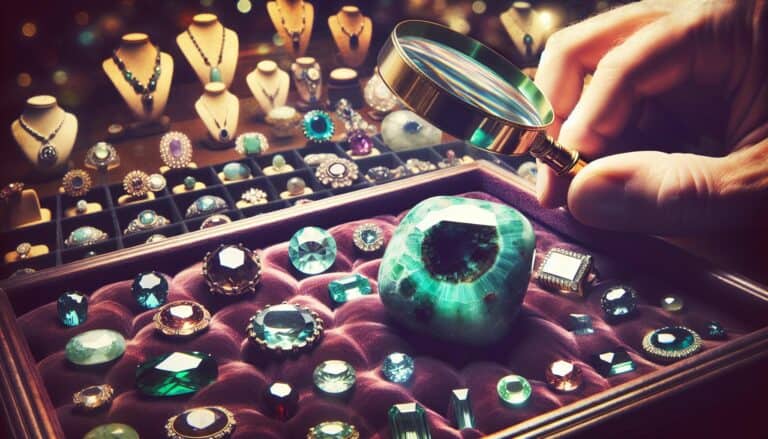
![Utah Rockhounding Sites in [year]: What to Find & Locations](https://observationhobbies.com/wp-content/uploads/2024/01/sQHkb_e4j6uFynupspziY-768x439.jpg)
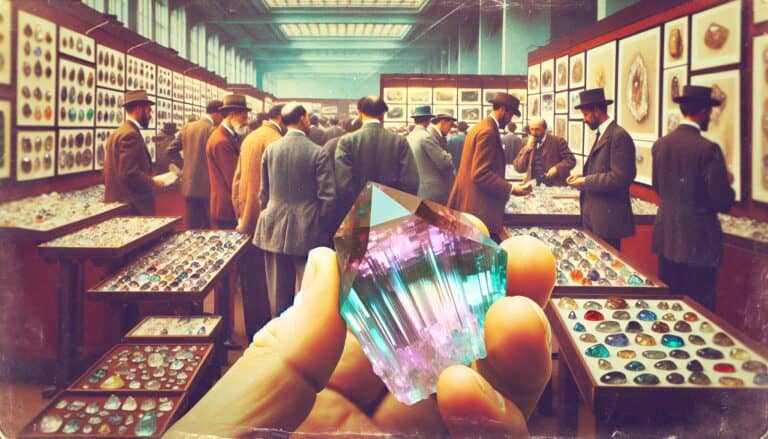
![Indiana Rockhounding Sites in [year]: Spots & Finds](https://observationhobbies.com/wp-content/uploads/2024/01/hO8R94wCsmRXbt2QdEYf6-768x439.jpg)

